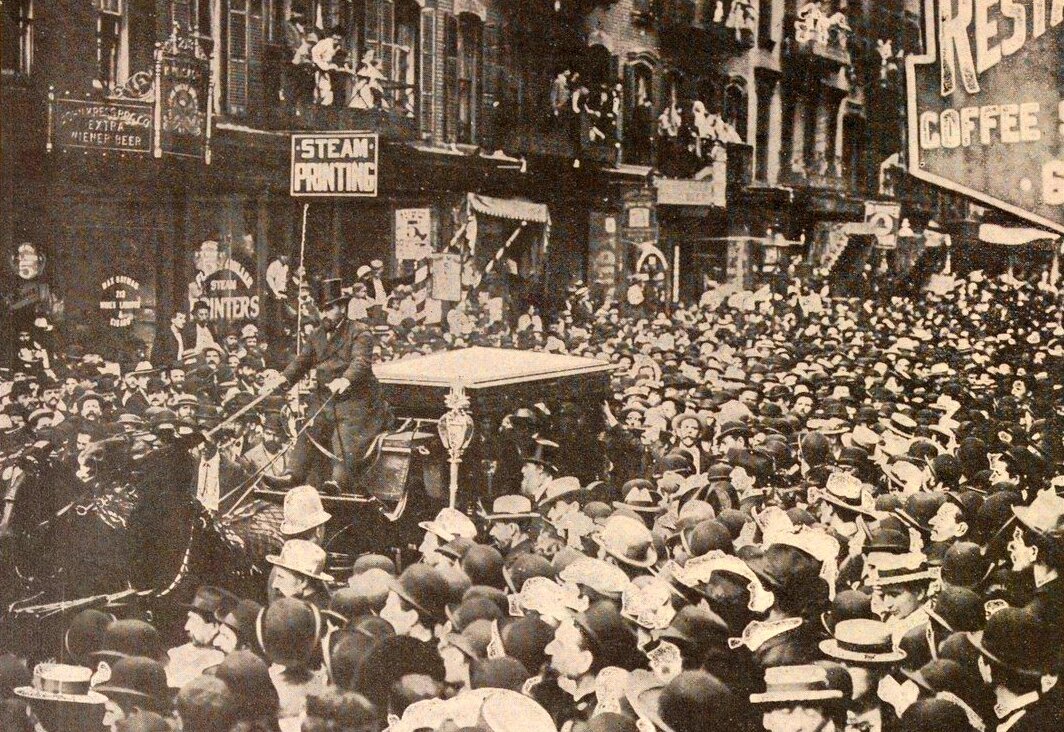Between Us Girls
Strange as it may sound, I’ve been thinking a lot about dolls this month, or, more to the point, perhaps, about girl culture in modern America. Some of my thoughts were triggered by the imperatives of academic research: I was preparing a talk on the material culture of Jewish teenage girls of the 1950s for a forthcoming conference, and was spending a fair amount of time in the archives. And some of my thoughts were sparked by a recent visit to New York City’s Times Square branch of Toys ”R” Us, where, with my 7-year-old niece in tow, I paid my respects to that special kingdom over which scantily clad Barbies preside, an encounter that left me quaking in my boots — my feminist boots, to be clear about it. As the professional shaded into the personal, I couldn’t help but reflect on just how fraught, even vexed, it once was — and continues to be — to grow up as an American Jewish girl.
In postwar America, a time when they first came into their own as a distinct and oppositional subculture, it was not easy to convince teenagers to participate in Jewish organizational life. Their heads filled with thoughts of Elvis, their bedrooms with phonographs and records, their purses with the latest shade of lipstick, Jewish culture seemed lackluster by comparison. In a concerted attempt to overcome that perception, Junior Hadassah, B’nai B’rith Girls and Young Judea, I discovered in the course of my research, sought successfully to refashion themselves, drawing on the appeal of fun and fashion in equal measure. “Young Judea,” touted one of its recruitment pamphlets, “is not somber and long faced. Its approach is rather through… fun, dancing, singing, games, athletics, picnics and parties.” Junior Hadassah, in turn, emphasized that membership was not just the right thing to do; it was the stylish thing to do. “Be Fashionable… Become a Junior Hadassah Girl.”
All this, of course, was immaterial to my niece, Sharon Lily. A child of Jerusalem, the only girl in a household of boys, she more than holds her own when it comes to roughhousing with her brothers. Barbie dolls, which made their debut in 1959, were of no interest to her, or so her mother related. Still, when left to her own devices one fine Sunday in January, Sharon Lily was to be found wandering up one aisle of Toys “R” Us and down another, in search of a Barbie to call her own. Now, I’ve read about the various states of undress that characterize a doll’s wardrobe these days, be they Barbie or Bratz, but I hadn’t actually laid eyes on their that sort of attire in quite some time. Boy, was I in for a rude awakening. I’m no prude, but frankly, I was shocked. Shocked! Dolls in halter tops, hot pants, thigh-high leather boots — why, this was the kind of getup that even hookers no longer wore.
But there it was, crowding one shelf after another.
Sharon Lily was entranced. This was precisely what she wanted. I, on the other hand, my feminist antennae working overtime, categorically refused.
“Do you know anyone who looks like that?” I said, my mouth forming a small moue of distaste as I summoned up a long list of stylishly, if modestly, dressed relatives — from great-grandmothers, grandmothers, aunts like me and cousins, all the way down to her mother — to build my case. “Just because you wouldn’t wear that doesn’t mean that other women don’t,” Sharon Lily retorted, resorting to a display of impeccable 7-year-old logic. But I stood my ground. “Let’s find something else,” I suggested, hoping to distract her with the latest PlayStation. But she wouldn’t budge. It was Barbie or bust. Eventually, we both tired of our standoff, and, soon enough, her interest in undressed Barbies waned, to be replaced, thankfully, by some computer gizmo or another.
Sharon Lily, I’m happy to report, left Toys “R” Us content. I, on the other hand, left the store in high dudgeon. “Is this what we’ve come to in America of 2007?” I sputtered. Why weren’t the mothers of young girls up in arms? What happened to moral indignation? More to the point, what happened to feminism? To self-respect? To Barbies who aspired to becoming doctors and lawyers, to filling the ranks of other distinguished and, yes, decently clothed occupations?
Just as I was about to give in to despair about the state of things, a new Barbie crossed my path via the Internet: Tefillin Barbie. The creation of Jen Taylor Friedman, this doll is not only modestly outfitted in a sweeping, floor-length blue denim skirt, the uniform of thousands of Orthodox Jewish girls in the United States and Israel, but she also wears a pair of tefillin (phylacteries) as well as a tallit (prayer shawl); her shiny blond hair, in turn, is neatly contained by a dark beret. A witty comment on contemporary American Jewish life where opportunities for enhanced religiosity exist alongside the claims of pop culture and the exigencies of tradition, Tefillin Barbie seems to me to strike just the right balance between playfulness and high purpose. Now that’s a Barbie I’d be pleased to buy for Sharon Lily. If only she would want it.
A message from our CEO & publisher Rachel Fishman Feddersen

I hope you appreciated this article. Before you go, I’d like to ask you to please support the Forward’s award-winning, nonprofit journalism during this critical time.
We’ve set a goal to raise $260,000 by December 31. That’s an ambitious goal, but one that will give us the resources we need to invest in the high quality news, opinion, analysis and cultural coverage that isn’t available anywhere else.
If you feel inspired to make an impact, now is the time to give something back. Join us as a member at your most generous level.
— Rachel Fishman Feddersen, Publisher and CEO






















